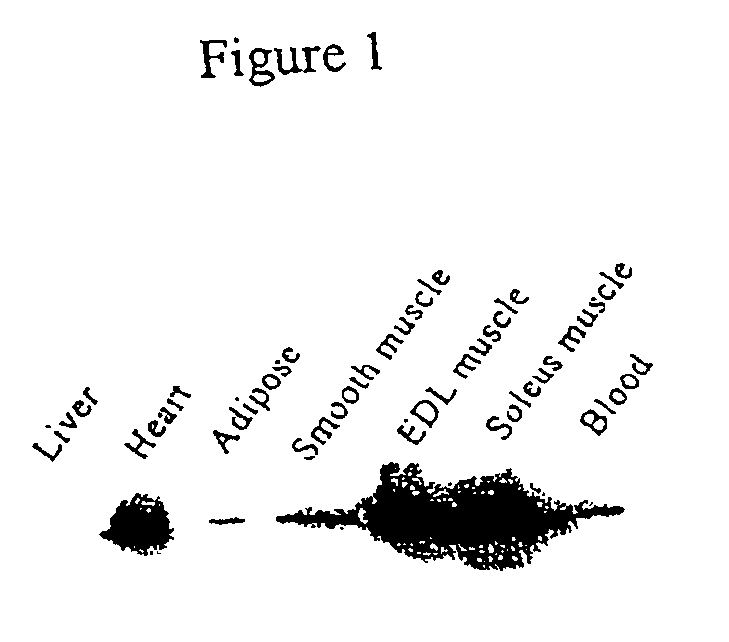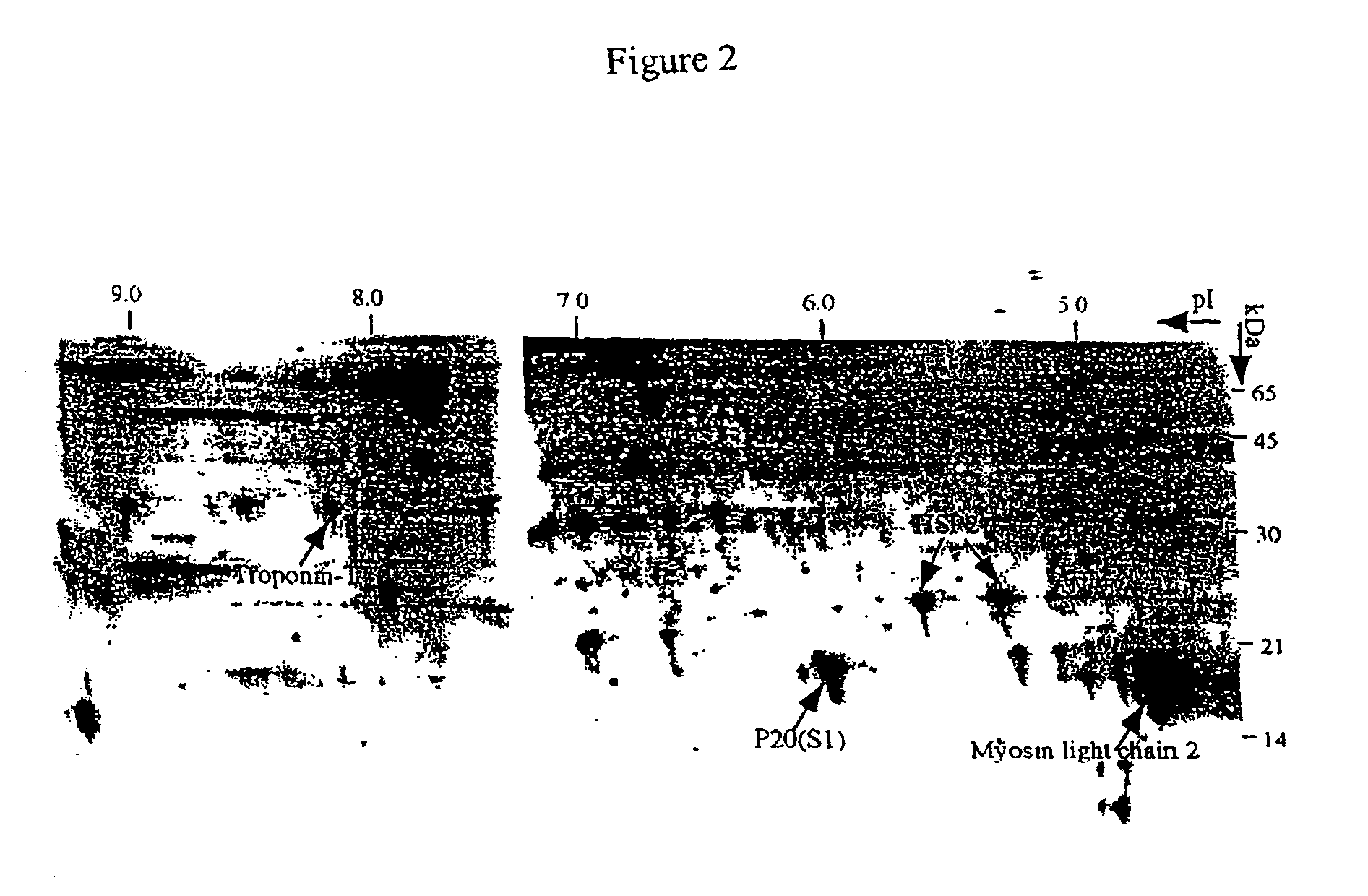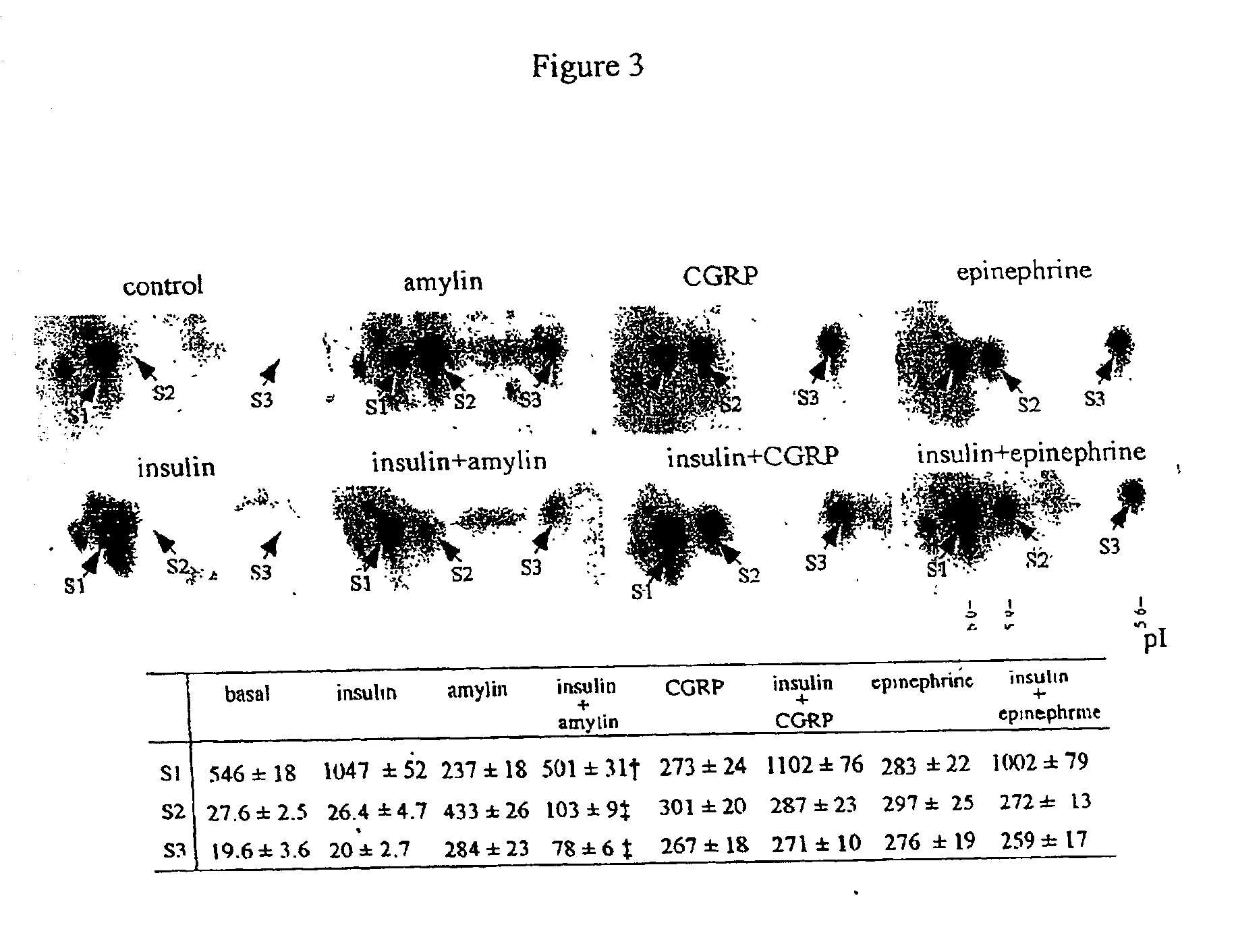Phosphoprotein target for insulin and its antagonists
a phosphoprotein and insulin technology, applied in the field of proteomics, can solve the problems of multifactorial and complex molecular basis of insulin resistance, and achieve the effect of reducing the level of at least one of s2
- Summary
- Abstract
- Description
- Claims
- Application Information
AI Technical Summary
Benefits of technology
Problems solved by technology
Method used
Image
Examples
example 1
[0051]Materials and Methods
[0052]Male Wistar rats were fed standard rat chow (NRM Diet 88, Auckland, New Zealand) with water ad libitum. [32P]-orthophosphate and [14C(U)]-D-glucose were purchased from ICN. 2-deoxy-D-[3H] glucose (1 mCi / ml) was from NEN and iodine-125 from Amersham pharmacia. Human insulin was Actrapid from Novo Nordisk. Rat amylin and CGRP were purchased from Bachem (Torrance, Calif.); epinephrine was from David Bull Laboratories; and dexamethasone from Sigma. The two-dimensional gel electrophoresis (2-DE) system and reagents were from Pharmacia. Anti-P20 polyclonal antibody was a generous gift from Dr. Kanefusa Kato (25). Anti-GLUT4 (H-61) was from Santa Cruz. The enhanced chemiluminescence (ECL) detection system was from Boehringer. The total cellular RNA extraction reagent (TRIZOL®), G418, Lipofectamine Plus reagent and random priming labelling kits were from Life Technology. pCXN2-GLUT4myc, which expresses myc-tagged GLUT4 in mammalian cells, was kindly provided...
example 2
P20 is the Major Insulin Responsive Phosphoprotein in Rat EDL Muscle Detected By 2-DE
[0070]P20 was initially isolated from rat skeletal muscle as a by-product during the purification of small heat shock proteins HSP27 / 28 and αB-crystallin (25). Under normal physiological conditions, it exists as large aggregates. P20 has been thought to be a heat-shock related protein, since it has significant amino acid sequence similarity with αB-crystallin (47%) and HSP27 / 28 (35%) (25, 28). However, unlike other small HSPs, heat treatment or chemical stress does not induce the expression of P20. Several recent studies suggest that P20 may be an actin-binding protein that is involved in cyclic nucleotide-mediated vasodilation and relaxation of rat smooth muscle, or histamine- and phorbol ester-induced contraction of bovine carotid artery smooth muscle (29-31). Interestingly, this protein is also present at high concentration in circulating whole blood in patients with vascular diseases. It can str...
example 3
Interplay Between Insulin And Amylin On Phosphorylation Of P20
[0072]Our previous studies demonstrated that insulin and its antagonists, epinephrine, amylin and CGRP, elicit differential phosphorylation on different sites of P20, thus producing three phosphorylated isoelectric variants of P20 (termed as S1, with a pI value of 6.0; S2, with a pI value of 5.9; and S3, with a pI value of 5.6) (23, 24). Phosphorylation of S1 occurs at serine 157 of P20, and insulin can increase its phosphorylation through a PI-3 kinase mediated pathway. Amylin, CGRP and epinephrine evoke phosphorylation at Serl6 of P20, through a cAMP mediated pathway, leading to the production of the phosphoisoform S2. In addition, these catabolic hormones also induce the phosphorylation of P20 at another two unidentified sites to produce the phosphoisoform S3.
[0073]Here, we further investigated the interplay between insulin and several of its antagonists on phosphorylation of P20. Interestingly, we found that insulin a...
PUM
| Property | Measurement | Unit |
|---|---|---|
| Electrical resistance | aaaaa | aaaaa |
Abstract
Description
Claims
Application Information
 Login to View More
Login to View More - R&D
- Intellectual Property
- Life Sciences
- Materials
- Tech Scout
- Unparalleled Data Quality
- Higher Quality Content
- 60% Fewer Hallucinations
Browse by: Latest US Patents, China's latest patents, Technical Efficacy Thesaurus, Application Domain, Technology Topic, Popular Technical Reports.
© 2025 PatSnap. All rights reserved.Legal|Privacy policy|Modern Slavery Act Transparency Statement|Sitemap|About US| Contact US: help@patsnap.com



